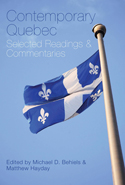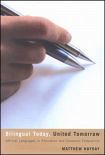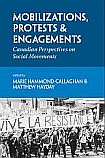French Immersion - back in the news
This year's Liberal leadership race and change in government, both of which have been heavilly affected by the Conservative resurgence in Quebec, have prompted a revival of interest in how Canada deals with English-French relations and how it has structured its language policies. This is good for me, given my own research. And that's why, driving through a rainstorm around Drummondville, Quebec on Friday afternoon, I got a call from Gloria Galloway of the Globe & Mail, who was working on this article about federal support for French-as-a-second-language and French immersion programs. An hour later, safely inside, I responded to her questions.
My contribution to this piece was fairly small. I was asked about how much the federal government has spent on FSL education over the past thirty-odd years. Fortunately, I had a copy of my book with me for my trip to Central Canada (I'm on the road for research and conferences for two weeks), and could pull out some figures from the appendix. But my response was not as precise as it could have been if I'd had access to my home files, and if I hadn't just completed an eleven-hour drive from Sackville to Montreal.
If you're interested, a more thorough response to the question that she asked would have gone this way:
The federal government's involvement in funding FSL and French immersion came about as part of the B&B Commission's recommendations, which were incorporated into a federal-provincial agreement now known as the Official Languages in Education Program, which started in 1970. Mainly intended to fund French language education for francophone minority communities, it also provided funding for FSL classes, and for English-minority education and ESL in Quebec. French immersion was not a going concern when the program was created, but became eligible for funding after a couple of years, at Ontario's request, and then became wildly popular, and grew dramatically as a result of the federal seed money.
Annual federal expenditures on OLEP (on all programs) grew from an initial $50M to over $200M by 1977, when all federal language programs were slashed in 1977-78, as part of a wide range of federal cutbacks. Funding then crept up slowly over the course of the 1980s, until they were again cut in 1993-4. Funding levels were restored in the late 1990s.
The plateau in immersion enrollments that is referred to in the article happened at the same time as the early 1990s cutbacks. Short on funding, these programs, which are still seen as "extras" in many provinces, were forced to restrict their enrolments - demand outstrips capacity, which has long been the problem of French immersion.
And if you're interested, while I'm the right age to be an immersion kid, I didn't go through the system. My French is the product of slogging through the core FSL programs in Toronto, programs that have done a fairly poor job of fostering bilingualism among the general population. Until pedagogical experts are listened to, and enough hours per week are spent on second-language learning, these "core" programs will not produce a satisfactory level of bilingualism (even passive/receptive bilingualism) in Canada's children. My understanding is that in some provinces, and in the past decade, this has started to improve, which is a long overdue corrective to the system. Recommend this Post






0 Comments:
Post a Comment
<< Home